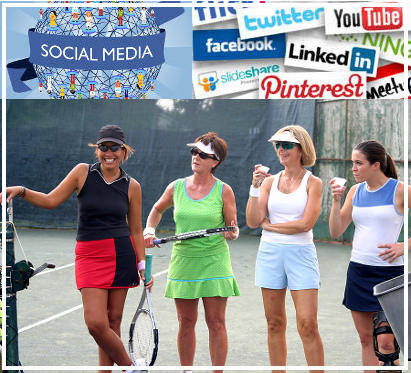|
4. What’s Your
One Thing?
It really
doesn’t matter who you are, what your credentials are, what
reputation your club has, or how many pros work at that club,
your service features and benefits aren’t enough to create
a passion-worthy stir. How will your offering appeal to the heart
of your audience, rather than the head? Remember, Disney isn’t
about movies, it’s about magic. Apple isn’t about technology,
it’s about innovation. What are you about? Do you turn beginners
into tennis players for life? Do you have what it takes to create
a sense of fun and competition in your players? Are you
able to teach your leaguers how to win matches and go to Sectionals
and Nationals? What are you about?
5. Engage your followers
Variety is the spice of life, and that also applies to social
media. A Facebook page that has the same information posted day
in, day out, will not capture the imagination of your club members
or potential new members.
Facebook allows you to post images and video. It allows you to
post links to other interesting sites and articles. The list
below represents the different types of communications you could
include in your Facebook posts:
- A statement
- e.g. "Happy Birthday, John"
- A picture of
a club event, a member, a pro
- A video of a
clinic
- Links to the
Grand Slams
- A question -
e.g. "What do you think of Novak Djokovic's chances of winning
Paris?"
- A poll of your
members about opening hours and court time
- An invite to
an event
- A joke, an anecdote
Mix it up a little and monitor the "likes" to see what
form of communication is engaging your club members the most.
Twitter is similar in that you can vary the way you communicate
with your followers with: tweets, retweets, direct messages,
photos, videos and so on and again making use of all these options
will give you the best chance of engaging your community, members
and non-members alike.
In summary
There are still clubs out there that choose to ignore social
media, treating it as the tool for the "young ones"
but what should be happening is that a club owns their social
media and develop a strategy to make sure it is used as a tool
to achieve club objectives.
Most clubs have members that are proficient in the use of Facebook
and Twitter, the mistake some clubs are making is letting them
loose with no direction and no goals. Change that and your club
will reap the benefit of these awesome tools.
Next month: Time
saving social media tips for tennis professionals. |
|







